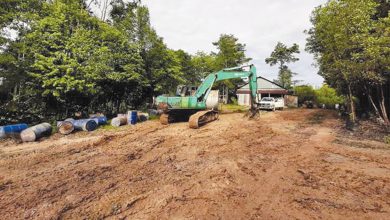1961 Crime Statistics were “shocking”
By Mariam Mokhtar
In 1961, it was reported, in the Straits Times, that the number of reported crimes had doubled from the previous year. It made 1961 one of the worst years for recorded crime. The number was a shocking 72 robberies compared with 29 in 1960. Other statistics showed mostly theft of bicycles (250), theft of vehicles (13) and housebreaking (159). One wonders what the figures would be like today and what other types of crime are prevalent.
In February 2015, Bercham assemblyman Cheong Chee Khing said that he would raise the matter of increased policing in the Bercham area to prevent further violent crime. He said that the Interpol standard was the provision of one policeman for every 250 residents and that he would raise this matter in the state assembly.
Cheong’s request for a more visible police presence was made after an alleged robbery at a coffee shop, situated in Lorong Bercham 4, on February 1. In that incident, a People’s Republic of China (PRC) citizen, Jin Jin Lian Yu, 68 had been injured and her passport, ring and money stolen.
The Bercham assemblyman said, “I have no complaints about the police force, as they are cooperative and do their job with dedication and efficiency. Bercham has over 100,000 residents so more police need to be stationed here”.
Three weeks later, tragedy struck again, when Jin was rushed to the Ipoh General Hospital, after a customer had discovered her unconscious and drenched in blood. She died of her injuries the following day, and a post-mortem revealed that she had been struck, on the head, with a blunt instrument.
In a separate incident, in mid-February, the wife of a police sergeant died after being slashed across the neck, at her home in Taman Tanjung Emas, in Tanjung Rambutan. Her body was discovered by her son at 3am.
In another development, the 29-year-old son of a police corporal, based at the Khantan Baru police station, was shot at his home, in Taman Tun Sambanthan, in Sungei Siput, towards the end of February. The gangland-style killing happened as he got out of his car to enter his house.
February 2015 also recorded a variety of drugs being seized by the police, from a residence in Bandar Lahat Mines, and three men were arrested. Heroin, syabu and the equipment for packing the heroin were seized. Another raid, on a storeroom, in a club, yielded more drug processing equipment, and a man was arrested.
Subsequent raids led to the arrests of four men, and more heroin, cash, cars and a RM500,000 ring were also seized. The men are believed to be part of a syndicate which was set up in Perak, to distribute drugs to other states.


We read about crimes being perpetrated, many of which are violent crimes, but we rarely hear of convictions.
Parents are naturally concerned, because they hear about gang-members recruiting young children. Most of the victims come from the marginalised sections of society.
Equally worrying is that some gang leaders are alleged to move around the community, masquerading as successful businessmen, with some being treated as respected pillars of society. It is depressing to find that, almost every other day, at least one person has been killed or injured, or that a major drugs haul has been made.
So, is “The Garden City” becoming a more dangerous place? Is Ipoh the victim of its own recent modernisation and progress? Are the police in charge? Or are certain parts in the city under the control of gangs? What progress is the authorities making in the battle against drugs? Should Ipoh have more police patrols?
A few years ago, the Chief Police Officer (CPO) stressed that crime prevention was a collective effort involving parents, schools, the community, the police and various government departments.
So, will the elders in the community and community leaders redouble their efforts to work together with the police to improve security?


